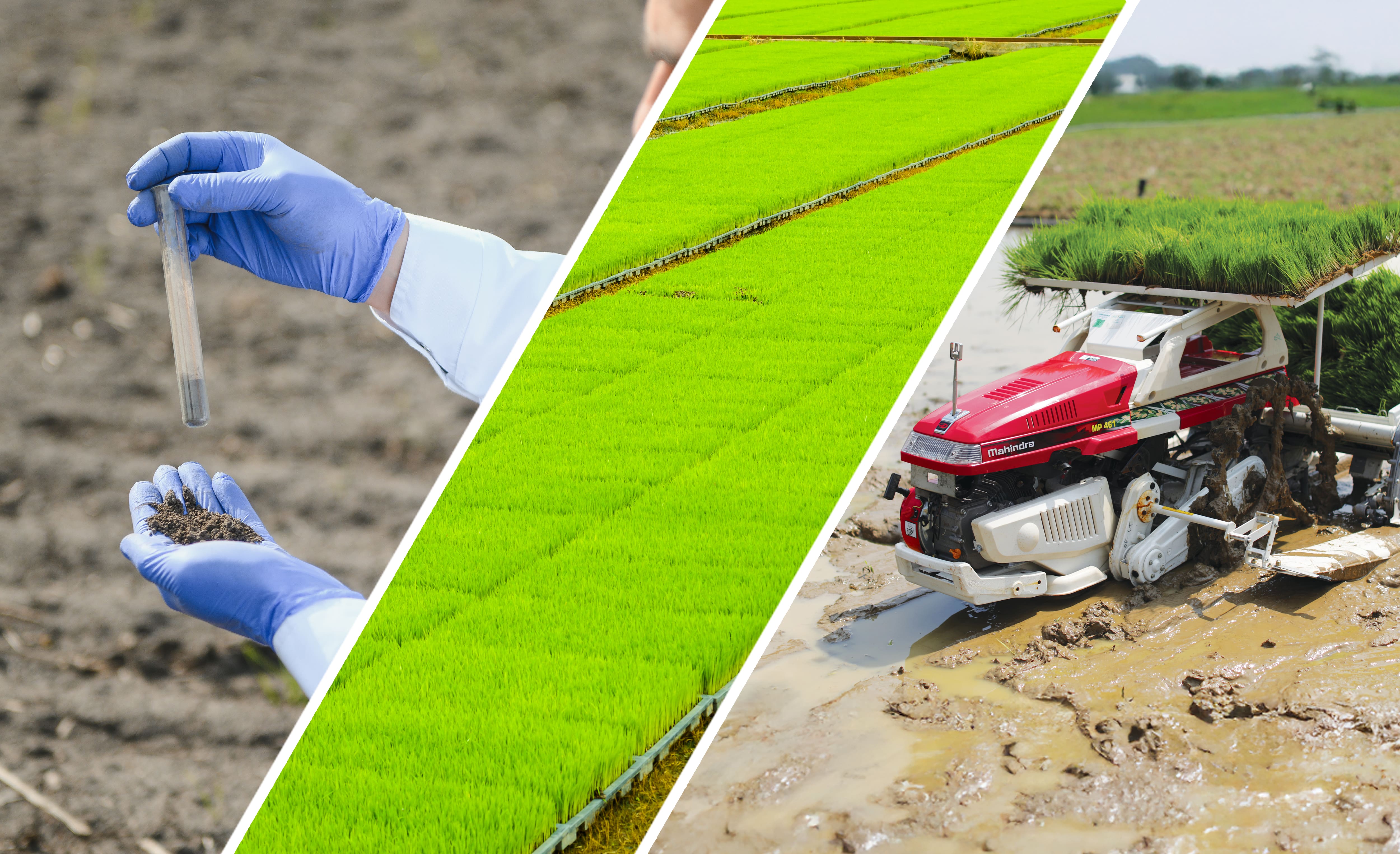Quick Support
Sales
- +91 8888200022 / +91 7744911119
Service
- +91 8888044448
Email
- [email protected]

Rice transplanting machines have revolutionised the way we plant rice, making the process quicker and more efficient. However, like any piece of machinery, they require regular maintenance to keep them running smoothly and extend their lifespan. Here are some easy maintenance tips to ensure your rice transplanting machine stays in top shape.
1. Regular Cleaning
Keeping your rice transplanting machine clean is one of the simplest yet most effective maintenance tasks. Dirt, mud, and plant residues can accumulate on various parts of the machine, which can lead to blockages and wear and tear.
Daily Cleaning: After each use, clean the machine thoroughly. Use a high-pressure hose to remove mud and debris. Pay special attention to the planting claws, seedling trays, and moving parts.
Deep Cleaning: Periodically, perform a deep clean. Disassemble parts that tend to accumulate dirt and clean them individually. This might include the seedling trays, planting claws, and conveyor belts.
2. Lubrication
Lubrication reduces friction and wear on the moving parts of your machine. It’s essential to keep all moving parts well-lubricated to ensure smooth operation.
Grease Points: Identify all grease points on your machine. These are usually indicated in the user manual. Apply grease to these points regularly, especially before and after the planting season.
Oil Levels: Check the oil levels in the engine and other components that require oil. Change the oil as recommended by the manufacturer, typically every 50 to 100 hours of operation.
3. Check and Tighten Bolts and Nuts
Over time, the vibrations from the rice planter machine's operation can cause bolts and nuts to loosen. Loose parts can lead to malfunction or damage.
Regular Inspections: Inspect the machine regularly for any loose bolts and nuts. Tighten them using the appropriate tools.
Use Locking Mechanisms: Where possible, use locking nuts or thread-locking fluid to prevent bolts from coming loose during operation.
4. Inspect and Replace Worn Parts
Wear and tear are inevitable, but timely replacement of worn parts can prevent breakdowns and extend the life of your machine.
Planting Claws: Check the planting claws for wear. Worn claws can affect the precision of planting and may damage seedlings.
Belts and Chains: Inspect belts and chains for signs of wear and tear. Replace them if they show significant wear or damage.
Bearings: Listen for unusual noises during operation, which can indicate worn bearings. Replace any faulty bearings promptly.
5. Engine Maintenance
The engine is the heart of your rice transplanting machine. Regular engine maintenance is crucial for reliable performance.
Air Filter: Clean or replace the air filter regularly to ensure the engine gets a proper air supply.
Spark Plug: Check the spark plug and replace it if it’s dirty or worn out.
Fuel System: Use clean fuel and check the fuel filter regularly. Replace the fuel filter as needed to prevent clogs.
6. Hydraulic System Care
If your rice transplanting machine uses a hydraulic system, it’s important to maintain it properly.
Fluid Levels: Check the hydraulic fluid levels regularly and top up as necessary. Use the type of fluid recommended by the manufacturer.
Hoses and Connections: Inspect hydraulic hoses and connections for leaks or damage. Replace any faulty hoses to prevent fluid loss and ensure smooth operation.
7. Electrical System Check
The electrical system powers many functions of the rice transplanting machine. Regular checks can prevent electrical failures.
Battery: Check the battery terminals for corrosion and clean them if necessary. Ensure the battery is charged and in good condition.
Wiring: Inspect the wiring for any signs of wear, damage, or loose connections. Repair or replace faulty wiring as needed.
Lights and Indicators: Ensure all lights and indicators are functioning correctly. Replace any burnt-out bulbs or faulty indicators.
8. Calibration
Accurate calibration ensures that your machine plants rice seedlings at the correct depth and spacing.
Planting Depth: Regularly check and adjust the planting depth settings to ensure seedlings are planted at the optimal depth.
Spacing: Verify that the spacing between seedlings is correct and adjust the settings as needed. Proper spacing is crucial for healthy plant growth and maximizing yield.
9. Storage
Proper storage of your rice transplanting machine during the off-season is important to prevent damage and ensure it’s ready for use when needed.
Clean Before Storage: Thoroughly clean the machine before storing it. Remove all dirt, mud, and plant residues.
Dry Storage: Store the machine in a dry, sheltered location to prevent rust and corrosion. Cover it with a tarp if necessary.
Regular Checks: Periodically check the machine during the storage period to ensure it’s in good condition and address any issues that may arise.
10. User Manual
Always refer to the user manual provided by the manufacturer for specific maintenance guidelines and schedules.
Follow Manufacturer’s Guidelines: Adhere to the maintenance schedule and procedures outlined in the user manual.
Troubleshooting: Use the troubleshooting guide in the manual to diagnose and fix common issues.
Conclusion
Regular maintenance of your rice transplanting machine is essential to ensure its efficiency, reliability, and longevity. By following these easy maintenance tips, you can keep your machine in top working condition, reduce downtime, and ensure a successful planting season.
For optimal performance, consider the Mahindra Walk Behind Rice Transplanter. This innovative machine transforms the labor-intensive, time-consuming, and costly rice transplanting process. Benefit from mechanization, reduced labor, and cost-effectiveness while achieving consistent and uniform planting.
This ensures healthier, robust yields with equal access to sunlight, water, and air for all rice seedlings. Remember, a well-maintained machine not only performs better but also saves you money in the long run by preventing costly repairs and replacements. Happy planting!